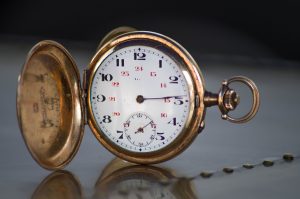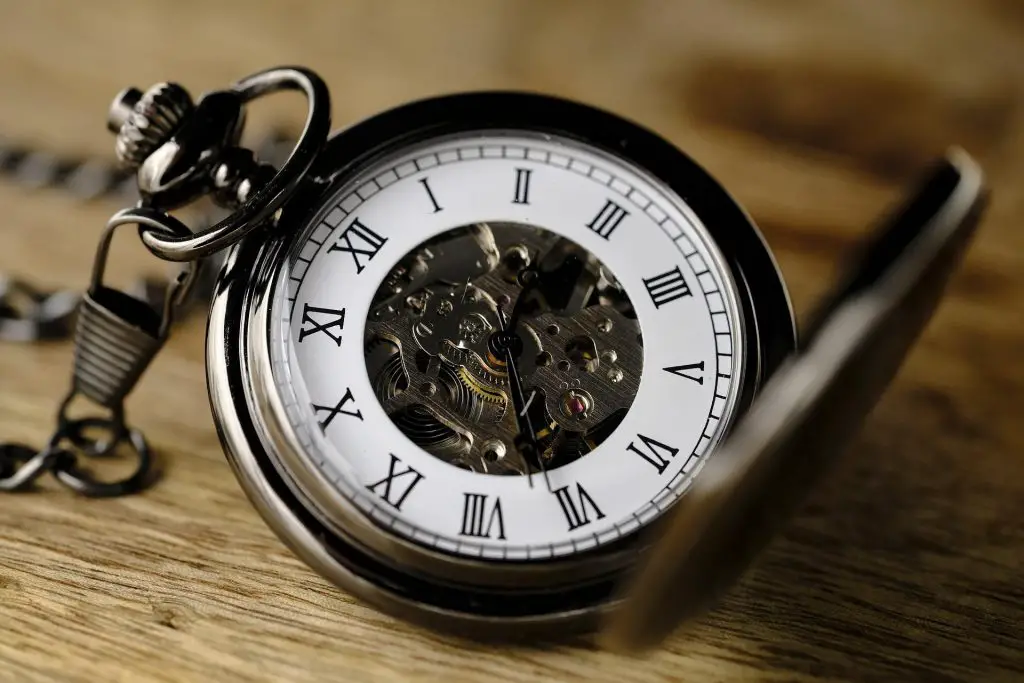Ever wondered where the idea of pocket watches come from and who invented them?
For every fashionable gentleman, accessories are an important part of his lifestyle, so it all makes sense if the inventor of a pocket watch is a man. As you find out who invented pocket watches and explore the history and evolution in this article, you should also start thinking of getting one if you don’t have one.
Who is the Inventor of Pocket Watches?
Peter Henlein invented the world’s first watch in the late 15th century. Born in 1485, he spent half of his years as a locksmith and clockmaker in Nuremberg, Germany. According to history, he designed small, simple ornamental watches, called Pomander Watches, which were fashionable accessories on different clothing pieces.
Who is Henle?
As the inventor of pocket watches’ identity is revealed, it is ideal that his personal life is also told. It would be said that his inspiration came from his life story and the things he observed.
Peter Henlein (also Henle) is the second son of Herman and Barbara Henlein. His father was a brass forger, who made him develop a passion for locksmithing. He first started as an apprentice, where he learned several skills and tricks of craftsmanship. In 1496, he became a master cutler, where he gained wide publicity in Nuremberg.
In 1504, Henle was involved in a fight with another locksmith who got killed – George Glaser. Since he was one of the best hands at the time, he received asylum in a Monastery. During the entire time, he gained a deeper understanding of how to make clocks.
A year after, Peter made the first world watch – the Pomander Watch. In the records, he was named the first fire-gilded pomander. He died in August 1542.
You may interested in
| What are the Different Paracord Types? |
| How to Find Preppers in Your Area |
| What Should Every Prepared Hunter Carry for Outdoor Emergencies? |
What is The History of Pocket Watches?
Peter Henlein designing the first watch opened doors to innovations; thus, the small watches birthed other models like pocket watches. In 1524, during World War I, his impressive work spread across Europe.
Mainsprings powered the first set of pocket watches made in the early 16th century. These watches were oval-shaped and bulky. A few years later, they were designed into a flat shape with screws to fasten them together. If there was something unique about these antique watches at the time, it had to be the lack of glass. As an alternative, the watches had a bras lid for protection.
What is the Evolution of Pocket Watches?
About a century after the first models of pocket watches were introduced, an evolution took place, which brought new fashion trends. The instigator of this trend was Charles II of England, known for carrying watches across North America and Europe. The new watches were designed small so that they could fit into a pocket comfortably.
New features were added to make sure it was as convenient as possible during this period—for instance, a glass lid for protection and a portable body for comfort.
However, the only limitation to the new design was its inaccuracy. At the time, most people were interested in owning jewelry rather than telling a more accurate time.
In the mid-19th century, several American watch companies emerged to produce more effective and reliable watches with standardized parts – one of them is the American Waltham Watch Company. This project extended to Europe; sooner, many people started wearing durable and affordable pocket watches.
However, there was a decrease in the demand for these watches during the World War, which led to some early companies’ demise.
Years later, pocket watches were brought back to improve fashion more extraordinarily. These improvements did not only birth some Watch companies, but it ensured the use of advanced technology to make more reliable watches for use.
What are the Types of Pocket Watches?
While Peter Henlein did good work to ensure many people follow his footpath to making some of the best pocket watches in the world today, it is ideal to say that there are different types available. Below is a description of the three types of pocket watches.
Open Face Watches
Based on its description, Open Face Watches are designed with no protection for the crystal. As the crystal is exposed, it makes it easier to read; however, it remains vulnerable. An Open Face Watch was previously used in railroad service to read time, until its disuse. It is remarkably known for its winding stem at the 12 o’clock mark and sub-second dial at 6 o’clock.
Hunter-Case Watches
A more improved pocket watch is the hunter-case watch that provides a spring-hinged metal covering for the crystal. There are currently two types of this watch – antique and modern types. The antique watch type has its hinge at 9 o’clock and the crown at 3 o’clock; on the other hand, the modern type has its hinge at 6 o’clock and the crown at 12 o’clock rotated.
Double-Hunter Watches
The other type of pocket watch is the Double-Hunter Watch which shares similar features with Hunter-Case watches. The only difference between the duo is that the latter has a hinged back case with visible mechanical movements.
Learn more about watches HERE.
What are the Two Watch Movements?
Pocket watches are also known for their unique movements. The following are the two common types of movements for this special watch.
Key Wind Movement
The Key Wind was the first developed system to set time on a pocket watch. It involves using a key connected to a winding mechanism. It seemed quite easy but inaccurate.
Stem Wind Movement
In recent times, the Stem Wind was designed for modern pocket watches. The movement requires pulling out a lever that allows the crown to set the time. Once it is done, the lever is pushed back, so it begins its operation.
Conclusion
This article aimed to help you learn more about who invented pocket watches; however, it has been expository enough to discover what these watches are. With a clear understanding of the history, evolution, and types of pocket watches, it shouldn’t be difficult for you to talk about one and identify it when necessary.
We hope that this article was helpful. If you have any suggestions or queries feel free to reach out in the comments section below.
Check out our website for more content like this.



